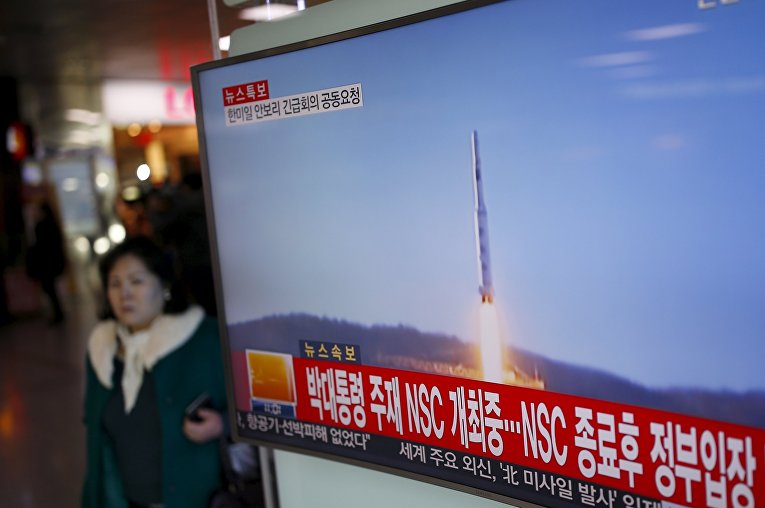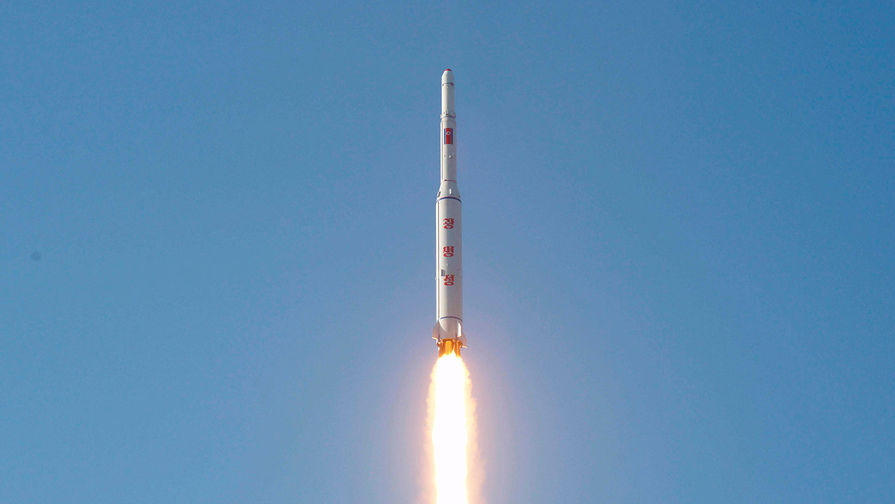North Korea announces successful launch of its space satellite

North Korea has announced the successful launch of the Gwanmenson-4 space satellite with the help of the Unkha-3 launch vehicle. The DPRK launched a ballistic missile on Sunday from the Sohe space center on the west coast. Before that, the DPRK had only one confirmed launch of a space satellite.
Based on the fact that no one has received any satellite signals, and also because the Ynkha-3 missile is a civilian modification of the Tephodon-2 intercontinental ballistic missile, some countries fear that in fact Korea under the guise of space tests, it is building up its military power and testing the ICBM.
')
For the first time, North Korea announced the successful launch of a satellite back in 1998 . But this launch, like the couple that followed, was not recognized as successful by other countries. The launch of December 12, 2012 turned out to be a success - then the Gwanmensoon-3 satellite was launched into orbit, which was confirmed even in the command of the EKO USA. Thus, the DPRK became the 10th space power capable of launching satellites with its own launch vehicles, in which it even bypassed South Korea.
Even then, the authorities of the United States, Japan, South Korea, France, Russia and a number of other countries, as well as the European Union and UN Secretary-General Ban Ki-moon, expressed serious concern about the launch, which, in their words, violates the requirement of UN resolutions 1718 and 1874 from 2009 on the inadmissibility of the use of ballistic missiles to launch something, and also called on the DPRK to refrain from launching.
The ecologists who spoke about the terrible consequences of the rocket fuel spill in the ocean were also attracted to the violent reaction. North Korea, in response, stated that it insists on its sovereign right to launch artificial earth satellites and use outer space for peaceful purposes.

About the upcoming launch of the rocket was known in advance - the DPRK, as it should be, warned the world community. On February 5, it became known that the rocket was already refueling and would soon be ready for launch.
On the night from Saturday to Sunday, by launching another rocket, North Korea again caused active seething in a number of countries. Japanese Prime Minister Shinzo Abe said that this step violates the UN Security Council resolution. US authorities announced their intention to tighten sanctions against Pyongyang, if he does not abandon his plan. UN Secretary-General Ban Ki-moon called on the DPRK to “stop provocative actions” and abide by obligations to the international community.
Shortly after the launch , the Japanese authorities announced that fragments of the rocket had fallen into the sea outside the zone notified by the DPRK. One fragment, according to Tokyo, fell 150 kilometers west of the Korean Peninsula in the Yellow Sea, the second 250 kilometers south-west of the Korean Peninsula in the East China Sea, and the third two kilometers south of Japan in the Pacific Ocean. Representatives from South Korea and the United States have already rushed to the site of the crash (presumably the second stage of the rocket).
In connection with the launch, the UN Security Council held an emergency meeting on Sunday with hot pursuit: the US is being pressured by the Security Council to take serious measures against the DPRK. The press statement adopted by the Security Council states that the launch, “like any other launches using ballistic technologies, even if they are classified as a satellite launch or a spacecraft launch,” contributes to the development of nuclear weapons technology. In the coming days, the Security Council is threatening to adopt a new resolution containing measures that respond to "these serious violations."
In the meantime, the estimated satellite trajectory can be monitored at N2YO.com. For enthusiasts who are trying to get signals from him, until nothing comes out.
Whether the satellite has been launched, is it operational, this remains to be seen. So far it is only clear that the idea of North Korea, as a country without industry and technology, is somewhat distorted.
Source: https://habr.com/ru/post/367885/
All Articles